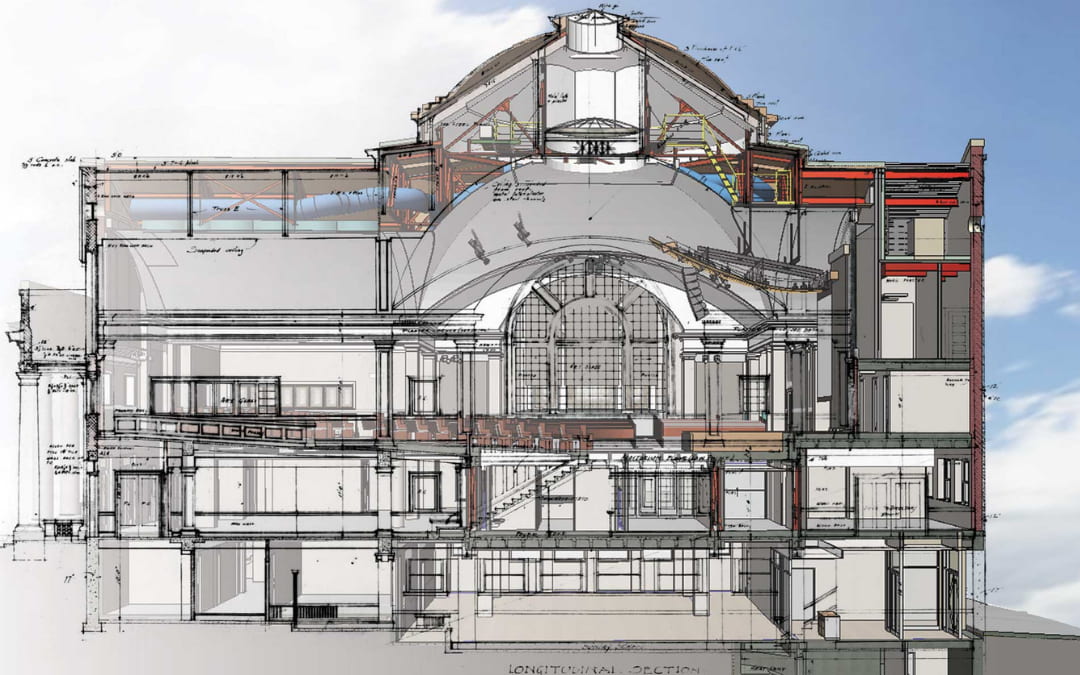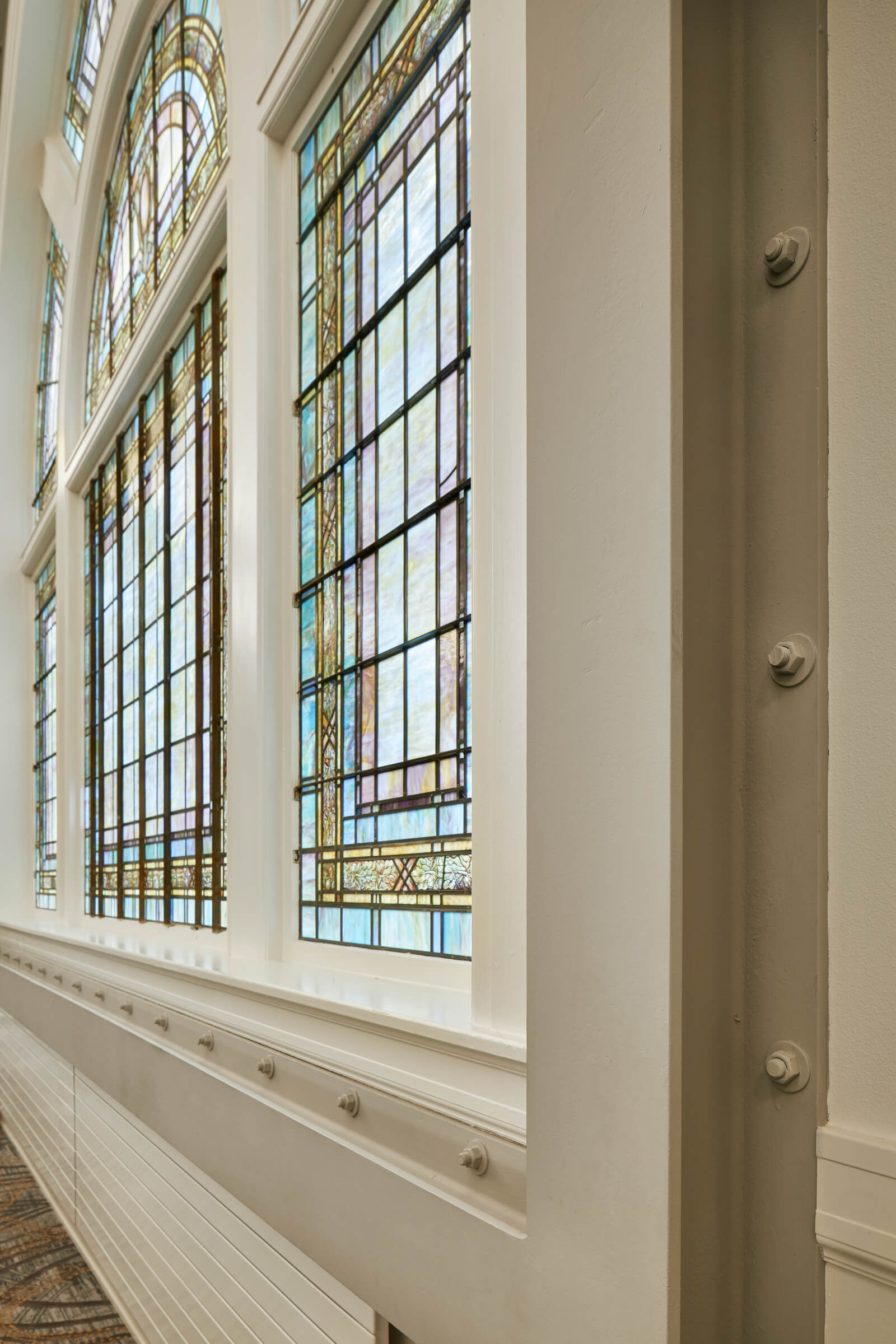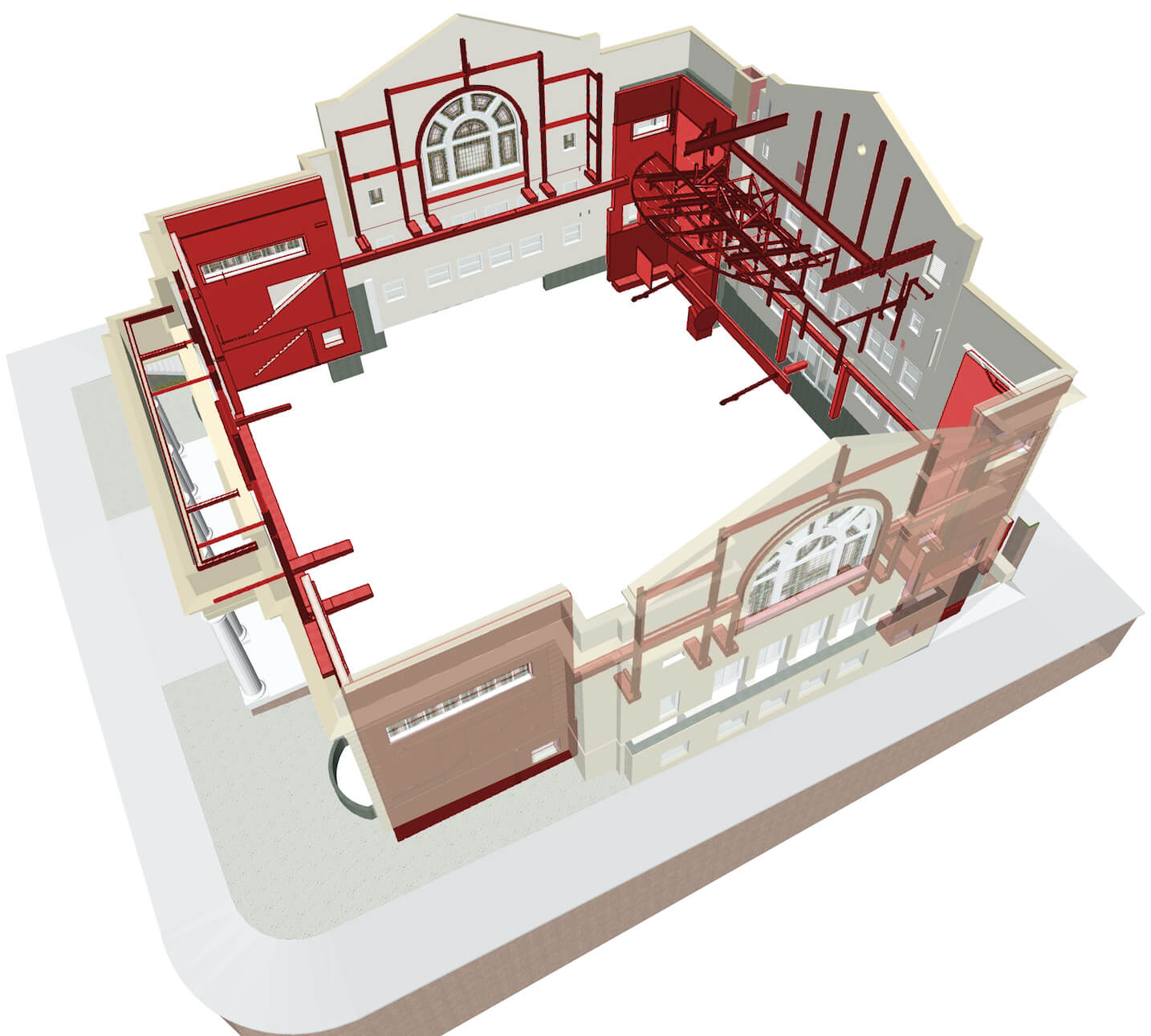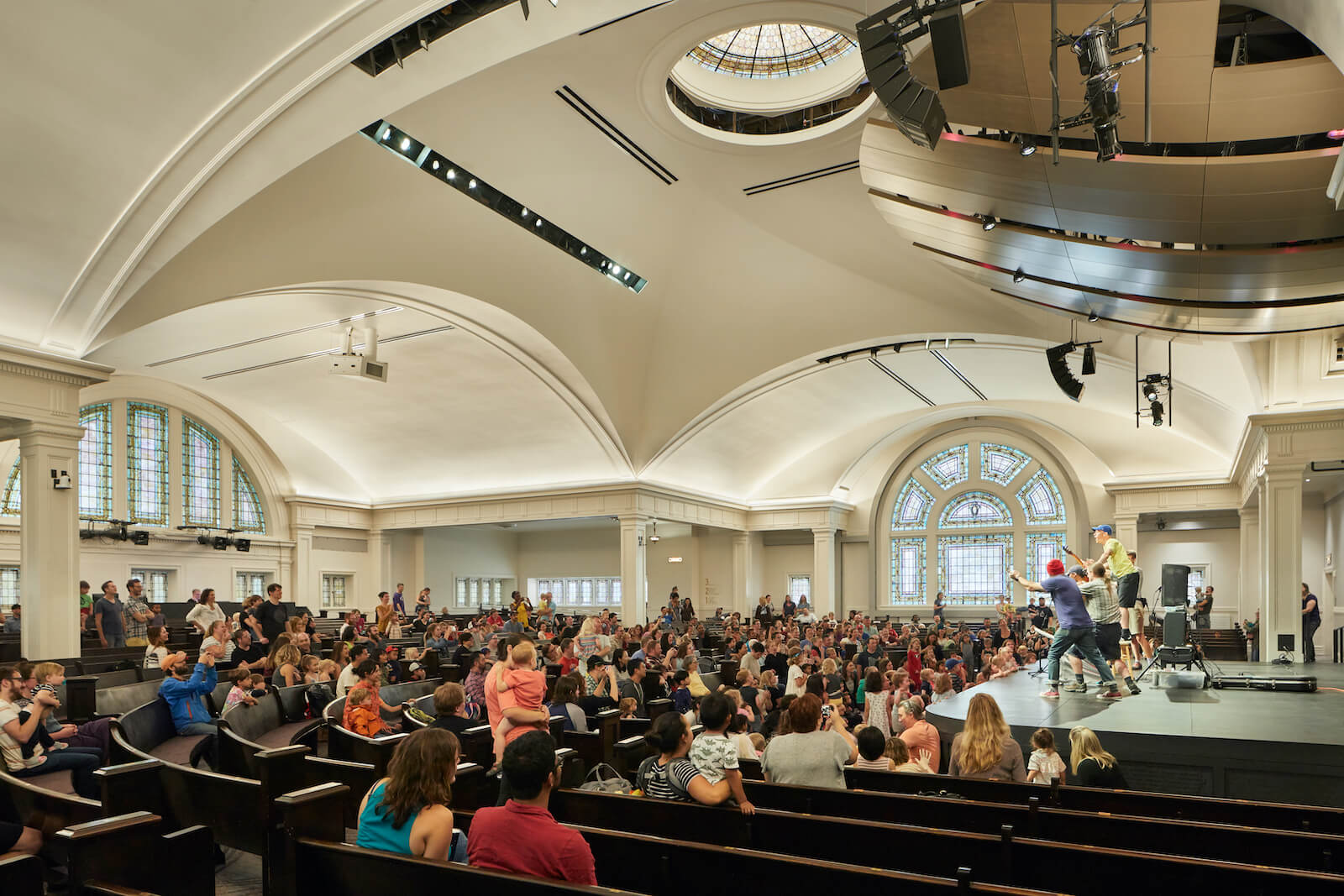Date January 16, 2020
The Renovation and Adaptive Reuse of Churches
A beloved cultural institution, Town Hall Seattle, is a perfect example of giving a beautiful building new life amidst the crush of rapid new city development. But what happens when an existing historic church is no longer suitable for the modern needs of a growing community organization?
Since 1998, the Town Hall Seattle organization has been operating in a historic Christian Science Church. The church was built in 1916-22 in the Classical Revival style. While this landmarked building’s historic character has helped to define the organization, after operating for years in an unrenovated nearly 100-year-old building, the quality and extent of Town Hall Seattle’s programming had become increasingly limited by the building’s outdated systems, inaccessibility, dysfunctional HVAC, poor acoustics, inadequate restrooms, and chronically leaking roof.
The BuildingWork design team needed to create a state-of-the-art multi-venue performing arts facility within the original historic structure, but we needed to do more than simply update the facilities for cultural events taking place here. This renovation also involved the seismic stabilization of the building including the large dome above the 900-seat Great Hall, the replacement of all existing building systems, and a host of accessibility improvements.

Section of Town Hall Seattle.
To achieve these goals, we started with a deep and thorough investigation of the historic building to learn how it was built, using both the latest 3D scanning technology and old-fashioned on-site physical investigation. Sometimes, our investigations uncovered unusual or unexpected site conditions. Dealing with the unknown was one of the most challenging aspects of this renovation.
“Despite the years of design, exploration, and prep, once you start opening up the building, there will always be surprises,” says BuildingWork Associate and Project Manager/Project Architect Kate Weiland, “Some were great, like a copy of the Oregonian Newspaper describing the discovery of King Tut’s tomb. Others were less fun, like opening up a stair wall to find it was hollow.” However, our teams’ expertise with the preservation and adaptive reuse of older buildings allowed us to overcome these unexpected challenges.
The project’s challenges caused us to continually look for and find innovative ways to integrate new construction within the building’s historic fabric. Our solutions challenged conventional notions of design and engineering in order to prioritize the historic preservation of the building.
Since the preservation of the original building was paramount to this project, we came up with creative ways to modernize the structure without compromising its character. As an unreinforced masonry building, Town Hall is especially vulnerable to damage from seismic activity. We integrated 110 tons of structural steel framing into the design so the structure will withstand such an event and protect it for years to come.

 Carefully integrated, out-of-place seismic steel frames, rather than blocks, Town Hall Seattle’s historic stained-glass windows. The diagram highlights the seismic improvements at Town Hall Seattle. Photo: Ben Benschneider. Diagram: BuildingWork.
Carefully integrated, out-of-place seismic steel frames, rather than blocks, Town Hall Seattle’s historic stained-glass windows. The diagram highlights the seismic improvements at Town Hall Seattle. Photo: Ben Benschneider. Diagram: BuildingWork.
While structural upgrades were necessary, they also had the potential to greatly affect the building’s historic character. Structurally, the original, large stained-glass windows in the Great Hall posed a problem as they are massive openings in an unreinforced masonry building. Standard cross-braced frames, the typical solution, would have blocked the stained glass so our solution relied on concrete shear walls in the four corners of the building. From these walls, collector beams “collect” loads imposed on a structure and transfer them into the shear walls. Using this method, we were able to design custom arched steel out-of-plane bracing that frames (rather than blocks) the existing stained-glass windows and support the walls in a seismic event.
In addition to the seismic retrofit, the BuildingWork team also performed historic preservation work including the rehabilitation of those monumental stained-glass windows, repair, and reconstruction of interior architectural finishes, and restoration of the building’s terracotta façade. In the lobby, the original Tiffany pendants were restored and re-lamped to provide efficient lighting without losing the lobby’s historic integrity.
A central goal of the project was to usher in another hundred years of civic use in the building. The historic restoration and structural updates are only a part of achieving this goal. The addition of climate control, a new elevator, a new non-gendered restroom facility, and a host of new theatrical, audio-visual, and acoustic systems will ensure this cultural institution will accommodate the current and future needs of its community.

Casper Babypants performs at the newly opened Town Hall Seattle. Photo: Ben Benschneider.
While Town Hall Seattle underwent a lot of work, it’s important to note that we structured the renovation to keep operating costs as low as possible, accounting for the upgrades through increased ticket sales and increased availability of rental spaces to others year-round. Based on estimates, Town Hall will be more accessible than ever without increasing costs of operation or utilities!
Accessibility and low operating costs are important since the urban landscape around Town Hall is changing and becoming more expensive as the city of Seattle experiences a period of high population growth and exceptionally rapid urban redevelopment. In this context, the preservation and reuse of existing buildings, especially those with long histories and a strong physical presence, has become a particularly important act.
BuildingWork Founder and Principal, Matt Aalfs notes that “there’s nothing better than making a positive impact in our city. The renovation of Town Hall Seattle has preserved this historic church building and transformed it into a vibrant center for performing arts, lectures, and culture, open and accessible to everyone.”
Despite all the improvements to the historic building, it still feels like Town Hall Seattle. As the project came to a close, Kate reflects “The best part of the project to me is that the space feels much the same, but better. It hasn’t lost its character. It’s still the quirky old building, full of nooks and crannies, community, ideas, and conversation. But the space feels better. It’s fresher and shinier, safer, more functional, and has a touch of swank, but at its heart, it’s still the same Town Hall”.
The renovation of this historic church building allows Town Hall Seattle to reach greater audiences and expand its mission of inclusion, inspiration, and engagement, which is perhaps more relevant now than ever.

